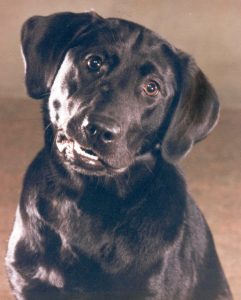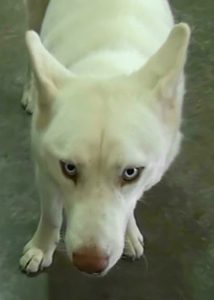“Can I say no to my dog?” is a question I often hear from new clients.
My short answer is “Yes, you can use any word or sound you please in training.” Pavlov proved that long ago. The problem is in the way dog owners use “no” and whether it leads them closer to success.
Owners usually approach dog training as a way to stop undesirable behavior and saying “no” seems a logical choice…to a human being.
I begin reframing their goal by suggesting “Let’s think about what you want your dog to do, rather than what not to do. When we do that we can use language and methods that help your dog learn and succeed.
To put things in context I explain how my wife and I adopted Buddha and Gandhi, each at two years of age. Neither had training and both had separation anxiety. Today they are well-mannered pets and registered therapy dogs…who have never heard the word “no” in training.
At this point most of my clients acquire a puzzled expression, with a subtle hint of doubt. They have been saying “no” to their dogs from the start and it probably seems inconceivable to refrain from doing so. After all, they want their dogs to behave.
I explain how the word “no” affords no utility as it fails to give instruction. Imagine the many situations in which a dog owner may say “no” to their pet and how the dog is expected to parse out the meaning. “No” may mean to stop barking at a squirrel, get off the sofa, stop begging food, stop pestering the family cat, to remain in position at the front door or come when called when it is time to leave the dog park.
Spoken language is not part of a dog’s natural communication, but it comes naturally to humans. After all, we invented spoken words! Perhaps we can be forgiven for assuming all other life forms understand what we mean when we say “no.”
To help a puzzled client, play a little training game. Put their dog on a leash and instruct the client to hold the leash, a clicker and treats. Explain their task is to start walking and whenever their dog is in the “reward zone” by their side, to click (without moving their hand) and put the treat to their dog’s mouth within one second. Easy, huh?
Your job is to tell the client when to begin walking, when to stop, which direction to turn, whether to speed up or slow down. Your only feedback in response to their job performance is to say “no” whenever they make a mistake. Be sure to use a soft voice so you do not stress the dog.
Most clients are quickly undone by their fuzzy observation skill, poor timing and lack of hand-eye coordination. I have seen some clients put the clicker to their dog’s mouth and drop all of their treats, before throwing up their hands in surrender. Uh, not so easy.
In only a few steps they will understand the futility of only saying “no” and answer their own question. As trainers, we know how important it is to engage the prefrontal cortex and let the learner figure things out. Dogs are smart; so are their owners.
Now ask them to try again and assure them that you will coach them through the process, just as you coach their dog when you are the handler. Use a perky upbeat voice, give them constructive and frequent feedback on every component of the overall exercise and celebrate their accomplishments. Tell them how wonderfully they are doing and how easy it will become with just a bit more practice.
At this point you should see a broad smile on their face and may ask them which exercise was most helpful to them. Once again, let the client figure it out and enjoy that sense of accomplishment.
I also explain that we have all likely been conditioned since childhood to hear the word “no” in a manner that is very often threatening. It is hard for most folks to say “no” without making it sound like “NO!” Primates yell at one another, after all, and dog owners often shout the word when they are frustrated or angry. Sometimes the dog is punished after hearing the word.
Dogs want to feel safe and respond to tone of voice. Shouting “NO!” at a dog will likely impede the learning process and will agitate or excite the person as well.
As I grew up, hearing my father shout “NO!” was a pretty good predictor that the next thing I experienced was going to be very unpleasant…and sometimes unsafe. Pavlov’s work was unknown to me then, but I understood the principle of associative learning.
We live in a punitive society and as human beings we have been conditioned to say “no” but that does not help our dogs. As a trainer I empathize equally with the dog and the family. When the owners understand the learning process from the dog’s perspective they find it easier to say “yes” or use a clicker as a clear path to accomplish their goals.
With a little more coaching they can remember to apply the training skills you taught their dog. If their dog jumps upon visitors for attention, try using “Touch” to guide the eager dog to a space beside the visitor and “Sit.” A “Down” position works even better to prevent jumping and affords the dog a belly rub. Woohoo!
Let’s just say no to “no” and help our clients learn how to say yes to success.
Daniel H. Antolec, CPT-A, CPDT-KA is the owner of Happy Buddha Dog Training. He has membership in Pet Professional Guild, Force-Free Trainers of Wisconsin, Association of Professional Dog Trainers and Dog Welfare Alliance. He also sits on the Board of Directors for Dogs on Call, Inc. and is Chairman of Pet Professional Guild Advocacy Committee.


